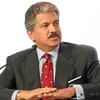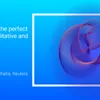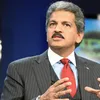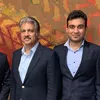Ramkripa Ananthan ('Kripa') is Chief Designer, Mahindra & Mahindra, Auto Sector. She is a graduate of BITS Pilani and IDC, IIT Bombay.
Her accomplishments include setting up a world-class design facility at Mahindra Design Studio, Mumbai, and handling the design of a wide portfolio, including SUVs, PickUps, buses, trucks, tractors, and construction equipment. Some of the recent products from the studio are Thar, XUV, Marazzo, Yuvo, and Jivo.
Kripa joins YourStory in this chat on the key role of design in business brands, impact of the coronavirus pandemic, and emerging trends in user experience.
See also YourStory's d-Zen (‘Design Zen’) section for more design resources, and PhotoSparks section on art and innovation.
This interview series is presented by YourStory in association with the Association of Designers of India (ADI). The interviews showcase thought leadership among leading design practitioners.
YourStory [YS]: What are the ways in which the pandemic has impacted the design process?
Ananthan Ramkripa [AR}: I could give an example of lateral thinking, which has created improved processes and assisted in better design outcomes because of the lockdowns during the pandemic.
A large portion of building a vehicle of high perceived quality is ensuring that all the parts, sub-assemblies from different functionalities, various manufacturing processes, different suppliers are of the correct dimension, surface quality, colour, grain, finish, and so on. Since there is both skill and a level of subjectivity in measuring these parameters, it typically means long co-located meetings of many people travelling from many places, which was impossible during the pandemic.
Designers and engineers worked together to create templates and masters, which along with the aid of elaborate and detailed drawings, leaning on experience, reskilling and upskilling and the selective use of virtual meetings were able to almost eliminate these meetings and still achieve the target.
YS: How has the pandemic affected mobility sectors and products, and how are you responding to the challenge?
AR: People are concerned about lack of hygiene, safety, social distancing in public, and shared transportation. We don’t currently have a presence in this space. We see increased interest in air filters and air quality monitoring systems.
Beyond physical health related concerns, there are issues of emotional and mental stress increasing due to the extended duration of the pandemic. We are working on concepts that increase your sense of wellbeing while being cocooned inside the vehicle.
YS: Beyond the pandemic, what are some broad trends in automobile design?
AR: I mention a few qualities I notice in auto design and its probable root cause.
· Design that is architectural, precise, sophisticated, influenced by fashion: Urbanisation
· Cleaner shapes driven by more aerodynamic or fuel efficient forms: Climate
· Connectedness, Comfort, Tactile pleasure, Protection: Congestion.
YS: How does the world of Internet of Things, AI, electric vehicles, and connected cars impact the design of automobiles?
AR: With non-ICE (integrated combustion engine) power transmissions come a bunch of possibilities – exciting but challenging! I could club them in two scenarios.
In the near term, the design of electric vehicles will look the same as ICE vehicles with some more freedom of exploration and expression in the facia, more space in interiors. In the long term, this could be radical and experimental.
Somewhere in the future will be this new aesthetic that will define a modern car, the next generation car. Considering it is going to be driven by new clean technology that has less vibration and noise, occupies less space up front, is going to be connected, and will be learning, it would be the age of the smart car. It’s great to be part of that process of exploration and discovery.
At Mahindra, we are focusing on user experience. With powerful technology connecting you with your vehicle and with the world, it is essential to create a seamless in-car experience for the customer – and it is that addictive experience by which you define your brand design.
In the past, we would joke that in India, you design the vehicle around four bottle holders! Now, we have to design the vehicle around sensors, cameras, silver box, speakers, and screens.
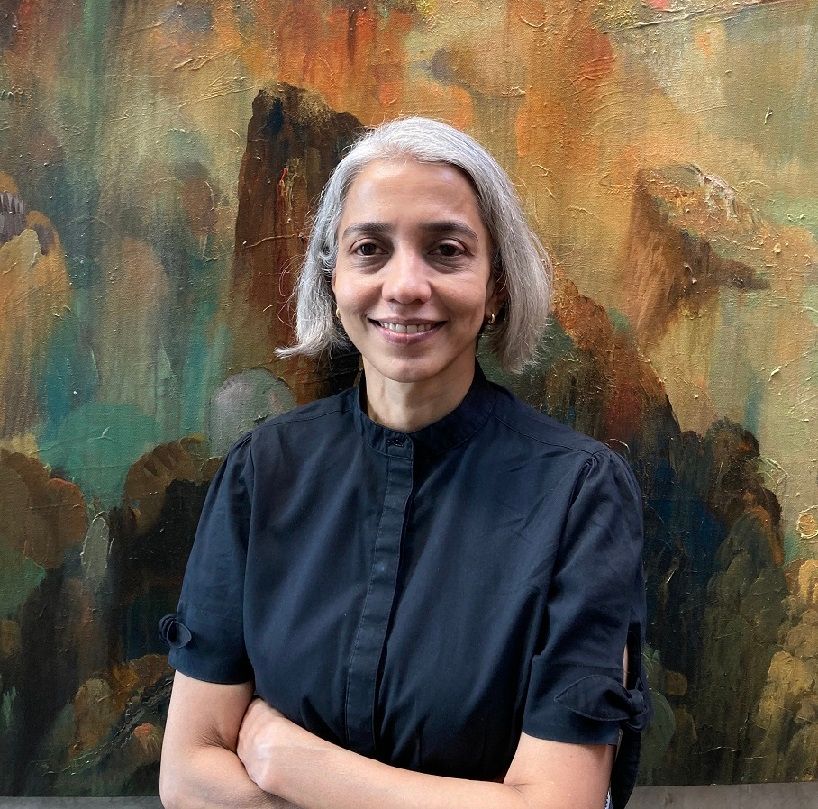
Ramkripa Ananthan, Chief Designer, Mahindra & Mahindra, Auto Sector
YS: How do you map technology, art and business principles on to a design language? What metaphors and analogies can be deployed here?
AR: For us, the vision at the core is the relationship between your customer and brand: who are your customers and what is it that your brand offers them. Design and technology are part of the product strategy to achieve that vision.
Design language is that which allows delivery of that vision consistently and coherently.
In the words of Aristotle, the whole is greater than the sum of the parts.
YS: So how do you map the product attributes to design language?
AR: The fundamental ability of a car designer is to convert insights, observations of customer behaviour, to ‘words’ and then to ‘form’. So, if the desire is to make the Thar ‘capable’, we know the visual attributes that need to be emphasised to make the design in that manner.
It should create an aha moment for the customer. At some level, it should be like a magic trick – creating the physical manifestation of the unsaid or latent desires.
YS: What are some ways in which mistakes and failures can be converted into design lessons?
AR: You can create a successful design only by correcting mistakes – or rather making mistakes and correcting them.
It is impossible to create the design of a vehicle right at the first go – it is too complex, with too many conflicting variables. The process is iterative. The trick is to not lose the essence or the sense of freshness, novelty, and wonder in creating something new.
The first Thar model we created had a 2430 wheelbase at which the balance felt just right. However, we had to increase the wheelbase for ingress to the second row. So, we reworked the design to adjust to this requirement without losing that compact, taut quality in Thar’s proportions.
YS: How can designers ‘co-create’ products with customers and business partners? How are you engaging with the ecosystem in this regard?
AR: The vehicle design process is totally customer focused. The design brief, which is the foundation document around which we create the design, is based on the ‘voice of customer’.
Through the somewhat long design and development process, we continually take our designs to customers for their feedback, for their input. We work with market research specialists, dealer partners, customers, auto journalists, bloggers, and auto enthusiasts.
YS: How is your team maintaining its level of proficiency in the era of work from home? What kinds of upskilling and culture change were undertaken?
AR: With help from our IT team, we were able to set up systems and processes in place such that people could work from home. This included setting up work stations at designers’ homes, access to software at home through IT links and also enabling processes like e-meetings.
However, we do have significant rework and loss of time as design communication is difficult without physical meetings and models. It is also possible that levels of creativity have dropped as it is essentially an organic process.
I do see that graphic designers are able to work from home more easily than exterior designers. So maybe it is the beginning of a design culture change, of truly harnessing our 3D visualisation ability.
We had to get a small staff of modellers back to work rather early in the lockdown as it is not possible to release designs for productions without first proving it out in full scale.
Fresh designers have certain challenges because you learn a lot just by being at the studio. Constant interaction, ‘being in touch’ is the key and in some cases, we have assigned mentors to guide fresh designers. A few designers used the opportunity to pick up new relevant tools. Maybe a few designers will be able to channel the emotional impact into creative output.
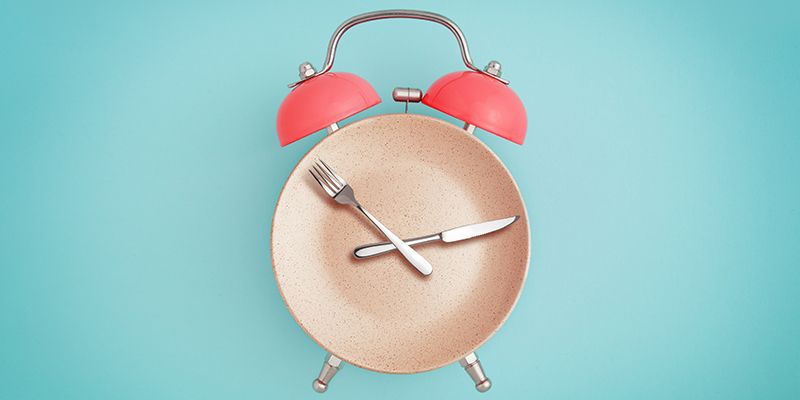
YS: Which of your products are you particularly proud of, and why?
AR: XUV500. Because it is an original. The exteriors, interiors, CMF (colour, material finish), were all something unusual, yet worked in creating a new appealing aesthetic. When it was launched, it was totally unexpected and even today, it has great individualistic presence.
Thar. It is difficult to articulate the reason. At Mahindra, we make vehicles that can go anywhere, which tickle your fancy to go places (literally and metaphorically), have adventures. And in Thar, that factor is distilled to its essence. That has not been easy, and the outcome is successful; so I am proud of the design.
YS: What are the common design principles that extend across your product portfolio, and which ones differ across categories?
AR: Toughness is a quality that is common across our portfolio. As visual design, it translates to full volumes, taut surfaces, strong graphics – nothing weak, fragile, or delicate.
In our SUVs, we bring in a level of sophistication. In our commercial vehicles (CVs), we prioritise command seating which would be all-round visibility and safety. In our tractors, we leverage our heritage.
YS: What are three books on your reading list these days?
AR: I read a lot, but my taste is not high-brow, mostly fiction. On my list, currently, there is the new Hilary Mantel (The Mirror and the Light), Susie Steiner (Remain Silent), and Jayant Kaikini (No Presents Please), of which I am reading a story a month
YS: How do you keep your 'creative edge' alive and kicking?
AR: I am always doing some art and craft project. Right now, I am trying some hybrid Sashiko embroidery. I do online courses in art history and art appreciation. Interior design and home improvement projects also get me excited.
I look up one piece of art everyday thanks to Daily Art. I am a window box gardener and bird watcher. Recently I have added butterflies to my winged friends. Bombay is a hot spot for butterflies!
YS: In what three ways was Thar unique when it was launched? How did it raise the bar from the XUV 500?
AR:
1. It stands apart from the crowd of wannabe SUVs with its authentic, capable design. It does not depend on gizmos to impress.
2. It has a convertible top for the ‘wind in hair’ experience.
3. It can trace its lineage back to the days when we got our independence.
Thar and XUV500 are like chalk and cheese. They have different applications; they appeal to a different person or a different need in the same person.
If I leave aside the comparison across categories, in general, we have gotten better at perceived quality, quality of materials, fit and finish, and overall sense of finesse. A lot of transportation design is about how to avoid making a compromised solution because of the conflicting requirements that are thrown up by the co-dependent complex systems. We have become better at creating designs that are not compromises but the best.
YS: What are the considerations leading to the relaunch of Thar?
AR: Thar is the product at the core of our vision. Our origin can be traced to the ancestors of Thar. It is essential that we keep the Thar up to date, to have a strong bond with our core values and heritage.
Safety – at Mahindra, we are committed to designing safe vehicles. You would have seen that the Thar meets GNCAP 4* rating.
YS: What are some of the lessons from this experience for other designers, on what it takes to systematically evolve a product line?
AR: I humbly share our method and experience. It is not a prescription. Create a lot of options; stretch the design well into the future and then decide what is the right option now
What are the main characteristics of the product? Break them down to their elements and co-dependencies; prioritise them; keep revisiting this to ascertain that the soul of the design is not getting lost.
Find a way to keep wiping your mind clear of its prejudices, especially if the design and development process takes a long time.
Have conviction. Work on developing a better sense of intuition, of empathy. Identify the right set of advisors, lead customers, and influencers.
YS: What are some design principles that will stand the test of time during this era of uncertainty?
AR: Need for a safe personal space, a cocoon, a home away from home; or a third space other than your home and office
Whether it is to keep your spirit of adventure, pioneering spirit or need to de-stress, take a holiday and go on a vacation, there will be a need to go places – off the beaten track. And so vehicles that are designed for exploration, for adventure will always be relevant.
YS: What are your parting words of advice or recommendations to aspiring designers in our audience?
AR: Design is about creativity, about being able to generate lots of ideas, about being able to see many futures and creating useful, beautiful objects for them.
In my view, a designer needs to be open minded, curious, and capable of working with a lot of constraints.
Edited by Teja Lele Desai
Link : https://yourstory.com/2020/12/design-mahindra-ramkripa-ananthan
Author :- Madanmohan Rao ( )
December 09, 2020 at 06:30AM
YourStory

